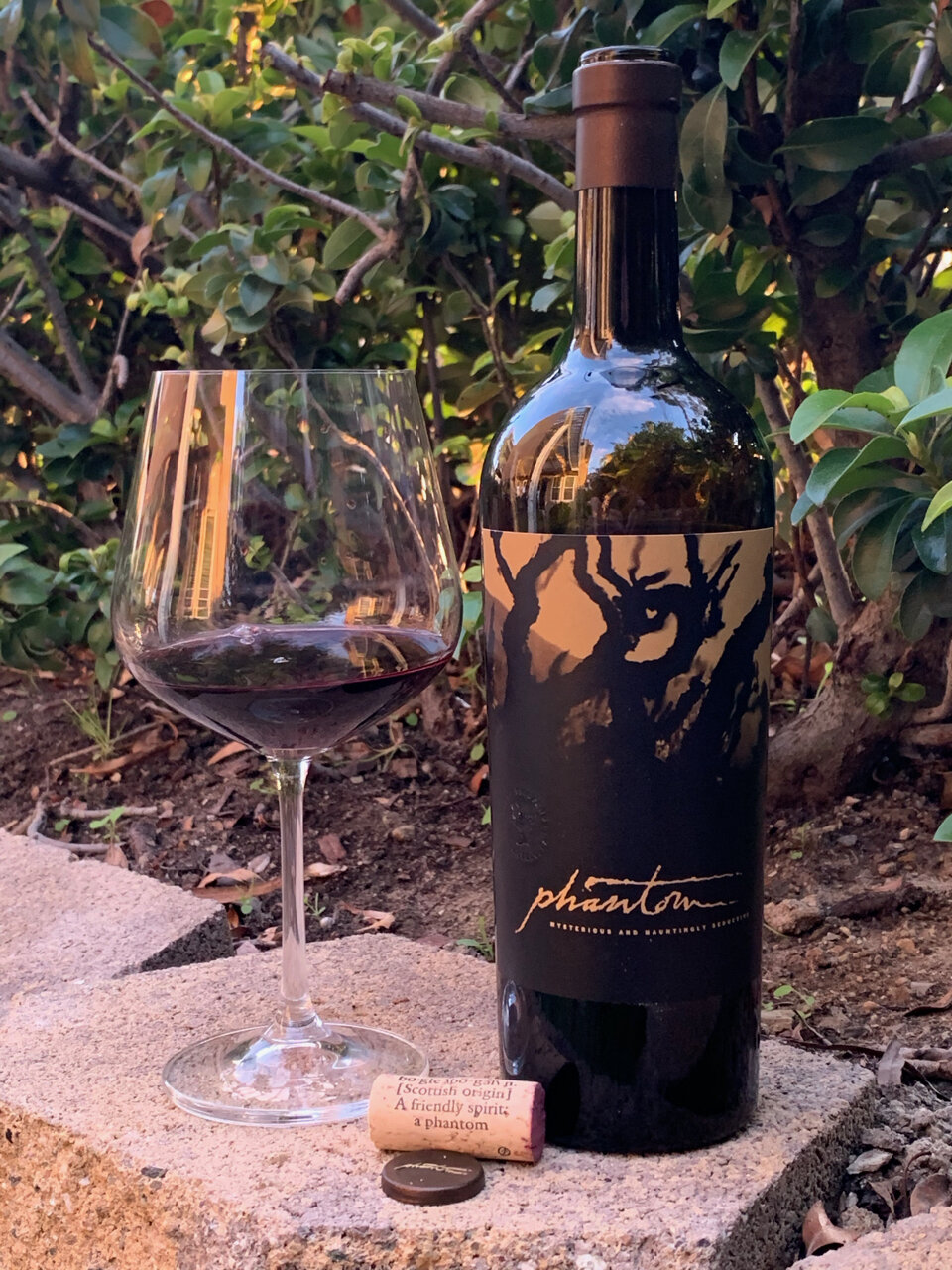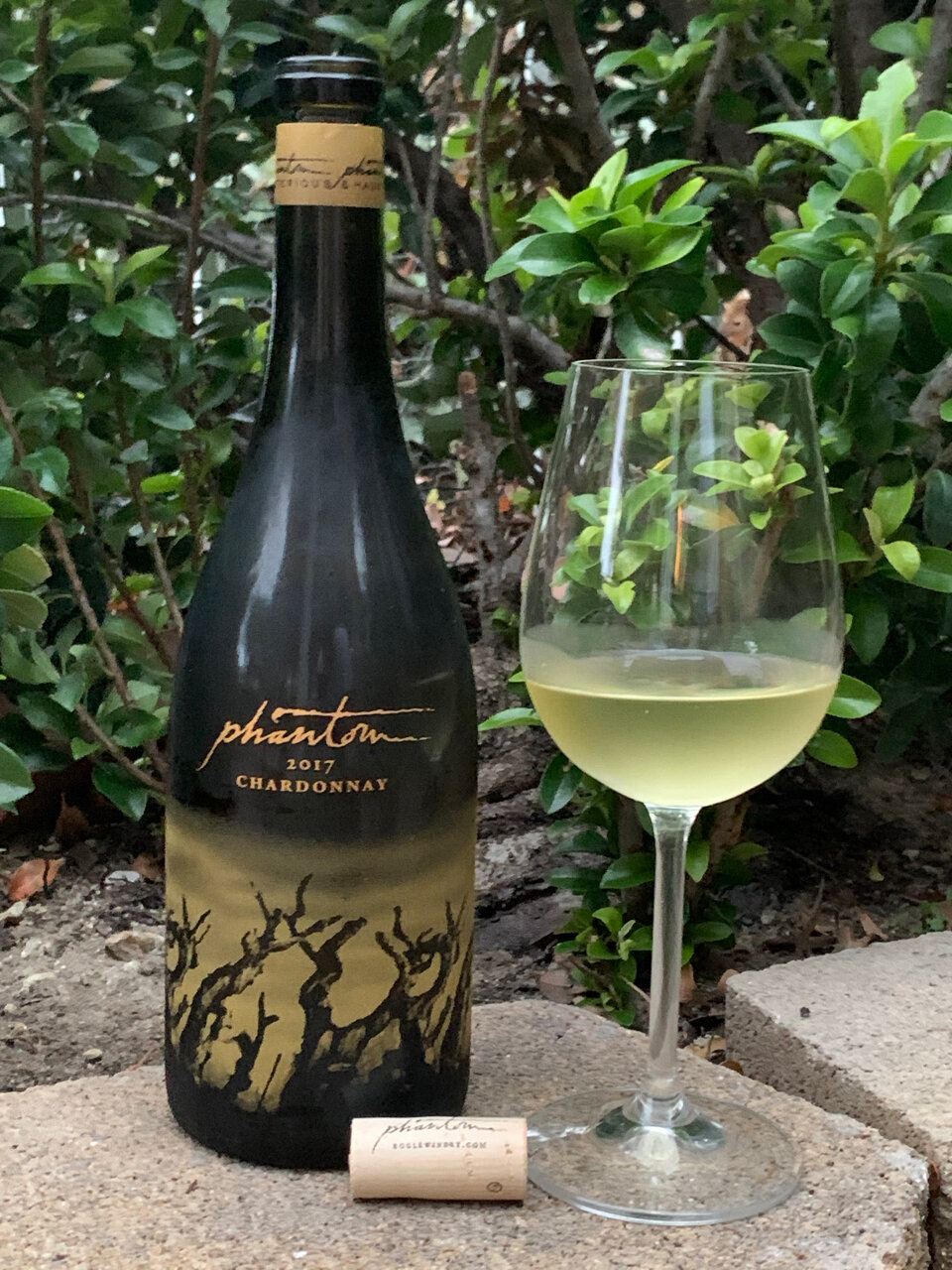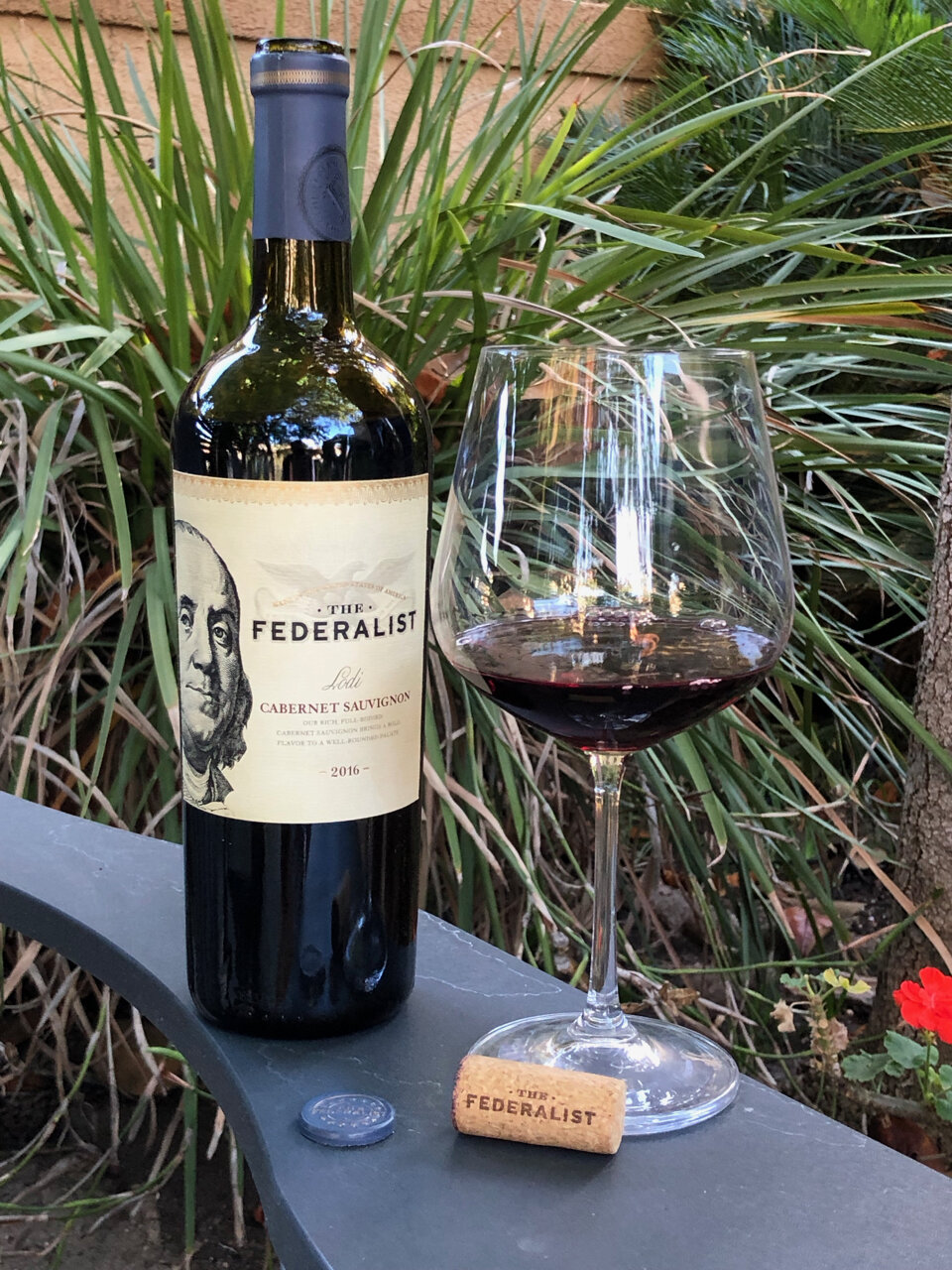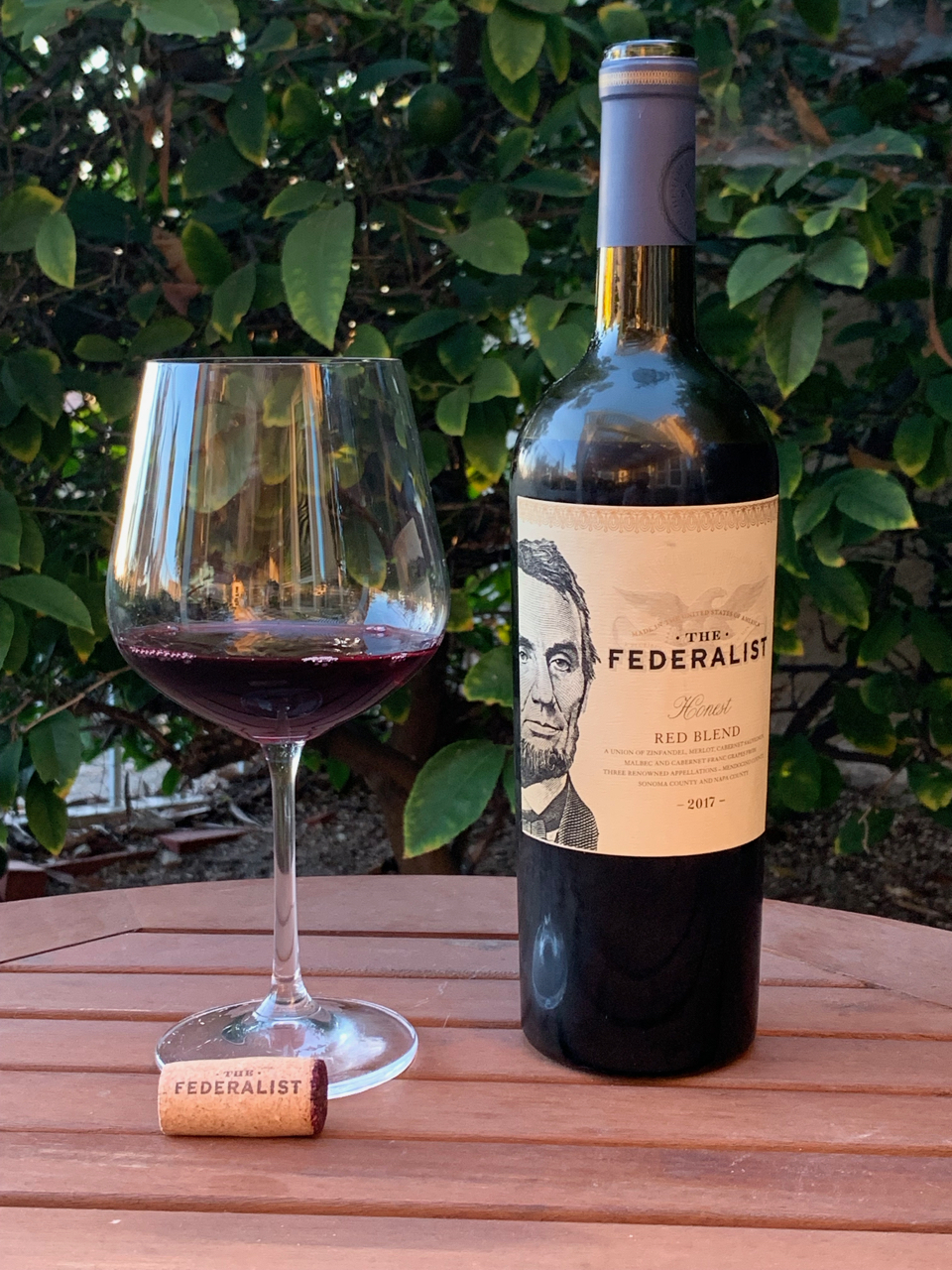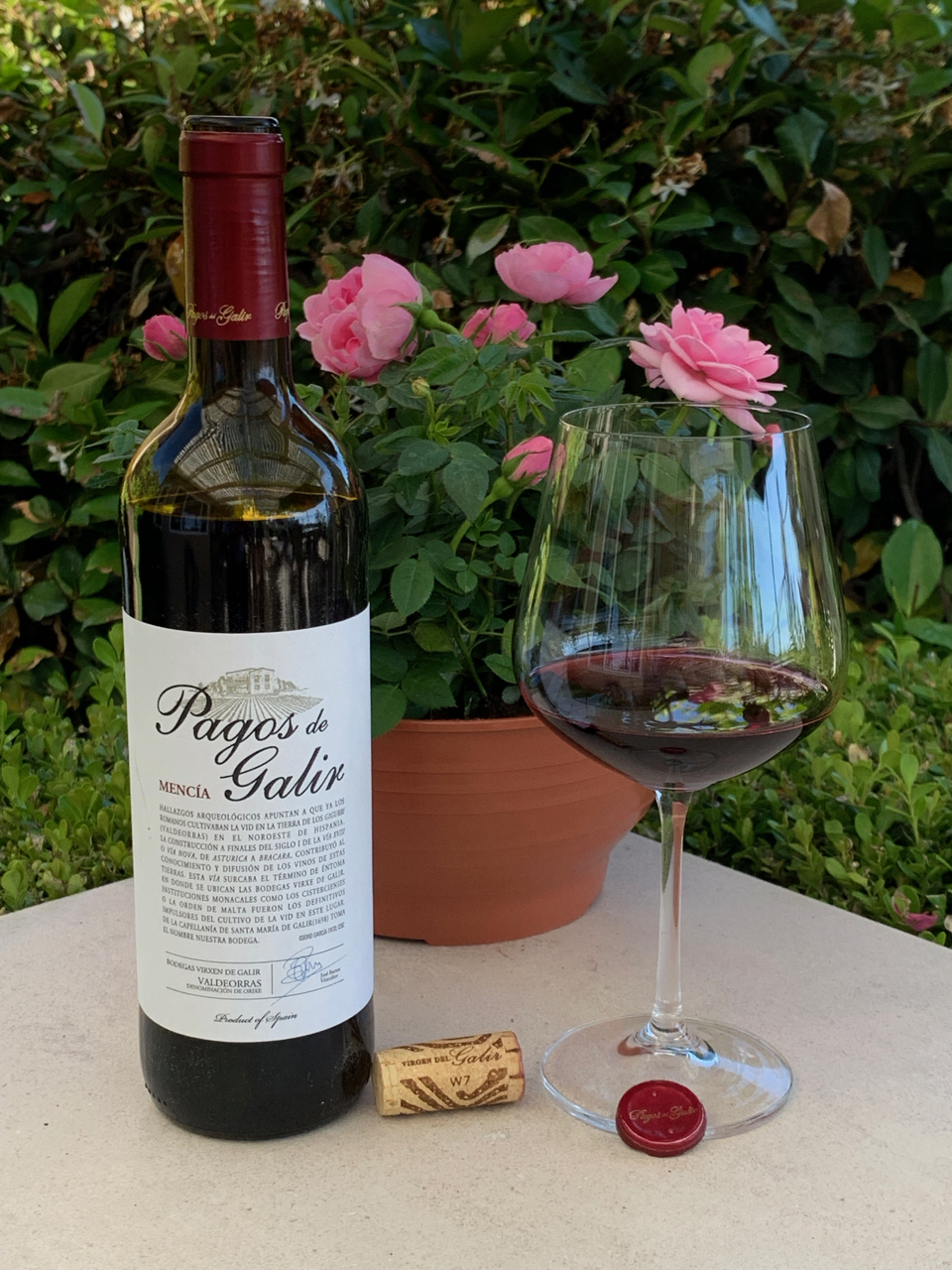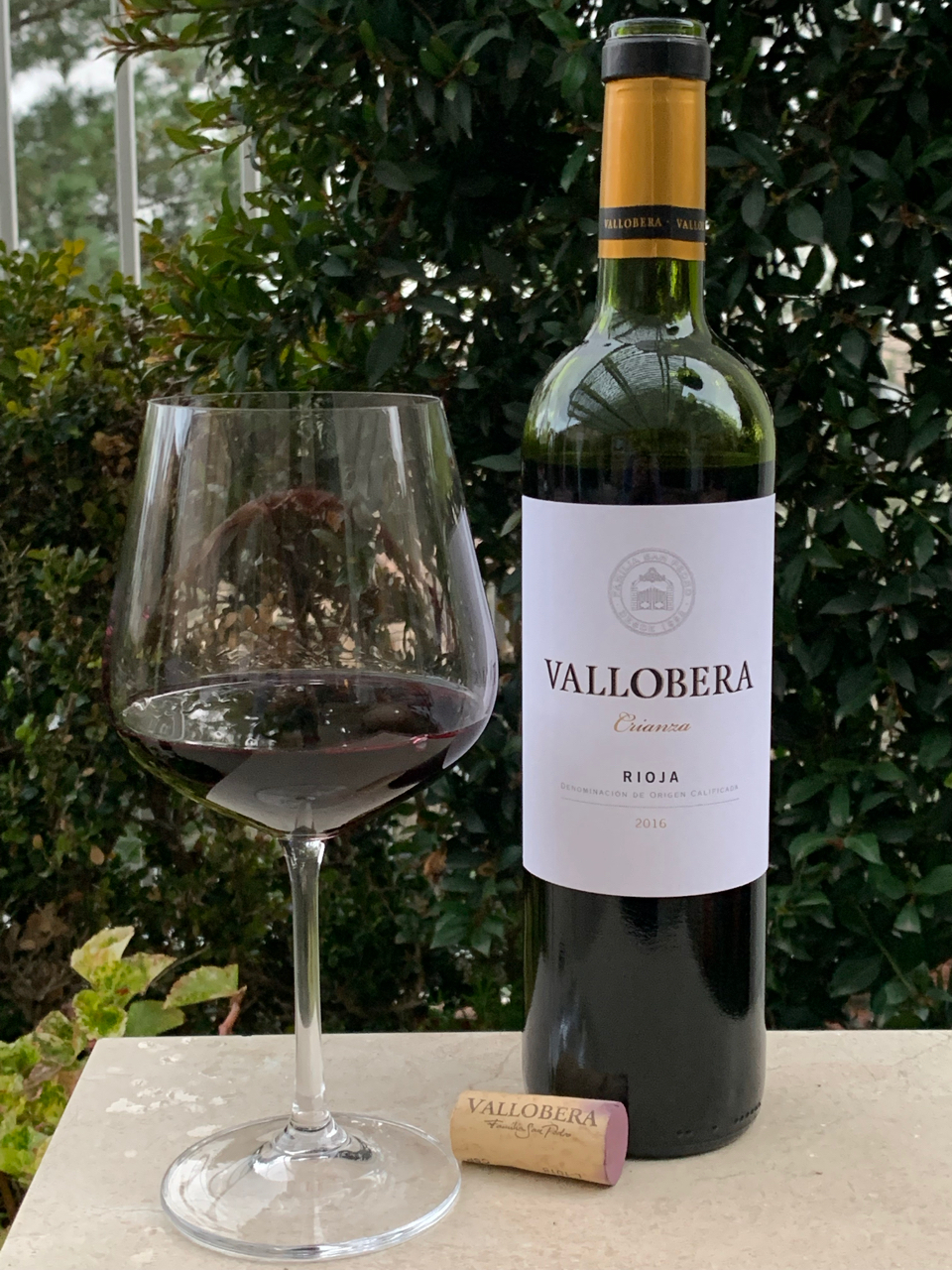2016 Beronia Crianza ($14.99)
The Rioja region of Spain is noted for its Tempranillo and this one from Beronia is indeed noteworthy.
This is a typical Rioja blend of grapes consisting of 91% Tempranillo, 8% Garnacha and 1% Mazuelo (a.k.a Carignan).
The Tempranillo in this wine defines its structure. The Grenache provides more berry flavors and spices while adding to its wonderful aroma. Finally, the Carignan, even this wine’s 1%, adds acidity and an ever-so-slight hint of tannin.
With nice bright fruit on the nose, this wine immediately yields red fruit flavors of cherry and raspberry. Its medium body allows the fruit flavors to shine though.
This wine’s label includes the word “crianza.” In case you are not familiar with this term, crianza indicates that wine has spent one year in oak barrels.
The oak aging was done in mixed barrels with American oak staves and French oak caps. This process added subtle spice flavors and yielded low tannin. This makes for an easy finish with each sip.
This is a very nice wine that can pair with lighter fare and also stands up nicely with bigger-flavored foods.
As with all wines featured as a Behind the Cork™ - Wine of the Week, it’s very affordable and easily attainable. Enjoy! Cheers!
Disclosure of Wine Sample Submission: I received this wine at no cost for review. The opinions expressed are entirely my own.
Sample Provided by Rebekah Polster, Donna White Communications
2015 Phantom Red Blend by Bogle ($25)
The Phantom is back! Last week’s Behind the Cork™ feature was the Phantom Chardonnay that was so good I went out and bought another bottle. This week feature is the Phantom Red Blend by Bogle.
This Phantom Red Blend is comprised of 44% Petite Sirah, 44% Zinfandel, 10% Merlot and 2% Cabernet Sauvignon. It spent 24 months in 1 & 2 year-old American and French Oak.
On the nose you know you are going to get richness, dark fruit, some earthiness and a healthy dose of oak.
And that oak comes right through. Along with the richness of the Petite Sirah, and the jammy Zinfandel, you get wonderful chocolate and vanilla tones from the oak that are followed up with a low tannin, smooth and lingering finish.
I’ve enjoyed Bogle wines for years but this offering from their Phantom label, along with their Phantom Chardonnay, really step it up a few notches.
And, you can bet I’ll be out soon looking for more of this Phantom Red Blend by Bogle! Cheers!
2017 Phantom Chardonnay by Bogle ($20)
Here’s a “scary” one from Bogle that is very appropriate as we approach Halloween. This Phantom Chardonnay is inspired by a ghostly figure that wanders the Bogle cellars at night. And, there are also some paranormal stories of the Phantom available by downloading the “Augmented Reality Wine Labels” app from the internet and scanning the Phantom bottle label.
As for this Phantom Chardonnay, it was sur lee aged for 10 months in 100% French Oak with lees stirring twice a month.
The result is anything but scary. It’s actually downright friendly to the nose and pallet. This Chardonnay has wonderful aromas of honey, vanilla and baked apples. The oak aging results in creamy, buttery flavors of caramel and butterscotch, along with apple and pear with just a touch of acidity to round out its flavor.
After tasting this one, I went out the next day and bought another one. It’s that good. So keep you eyes out for this Phantom Chardonnay by Bogle! Cheers!
2016 The Federalist Lodi Cabernet Sauvignon ($17.99)
The Federalist Lodi Cabernet Sauvignon was created to honor Benjamin Franklin who was a passionate man who helped draft the Declaration of Independence and campaigned for Colonial unity during the American Revolution. The Federalist’s passion for winemaking rivals that of Ben Franklin’s for the country.
This Cabernet Sauvignon is from Lodi in the middle of California’s central valley. With more than 100,000 acres of vineyards, it is twice the size of Napa Valley.
The Federalist Cabernet Sauvignon is 93% Cabernet Sauvignon with 5% Zinfandel and a combined 2% of Petite Sirah, Merlot and Cabernet Franc. Different blocks were fermented separately to preserve the characteristics of each. They each spend an average of 18 days on the skins during fermentation and then finished with 15 months in oak - 35% of which was new oak.
While Lodi is known for producing big and bold wines, the Federalist Lodi Cabernet Sauvignon actually leans toward being a medium-bodied wine with notes of sour cherry, plum, and blackberry. The tannins are quite soft and this Cab finishes with light notes and medium acidity.
This Federalist Cabernet Sauvignon is another good one that’s affordable and attainable - Just right for being featured as a Behind the Cork™ wine of the week! Cheers!
2016 Federalist Honest Red Blend ($21.99)
The Federalist Honest Red Blend pays homage to one of the most highly regarded American Presidents of all time, Abraham Lincoln.
This is a blend of reds from the California’s North Coast appellation that includes 46.4% Merlot, 24% Zinfandel, 22% Cabernet Sauvignon and 7.6% Malbec. (I always find the fractional percentages of a varietal in a blend fascinating, but I’ll address that in a future blog). It’s somewhat a Bordeaux blend but with the addition of the Zinfandel.
Each wine is fermented separately, spending an average of 18 days on the skins. Then, they are aged 15 months in 35% new Oak.
With all these big reds, the color of this Honest Red Blend remains a pale purple.
On the nose there are floral notes along with hints of black fruits such as black cherry and black currant.
The black cherry flavors also come through on the palette. The tannins are surprisingly moderate and the finish is again surprisingly light.
So, while this Federalist Honest Red Blend states that it “…burst with bold layered flavors” it actually has some lighter, more delicate notes as well. While I’ve seen this one in the past, it was a new one for me. And, I’m so glad to have become acquainted with The Federalist. Cheers!
2018 Kalfu Kuda Sauvignon Blanc ($19)
This Sauvignon Blanc from Kalfu is from the Las Terrazas vineyard in Leyda Valley, Chile.
Leyda Valley is a sub-region of the San Antonio Valley wine region in Chile, just 55 miles west of the Chilean capital, Santiago. This region by the Pacific Ocean produces bright, vibrant wines. And, this Sauvignon Blanc is a fine example.
Kalfu means ‘blue’ in the language of the Mapuche, the indigenous inhabitants of Chile, and for the Mapuche, Kalfu is synonymous with the magnificent Pacific Ocean that boarders Chile’s western coastline. A coastline blessed with an exceptional cool climate, constant refreshing breezes and early morning fogs that lead to a slow, steady ripening period for grapes, helping to create balanced, elegant wines.
This 100% Sauvignon Blanc from Kalfu is fermented in stainless steel tanks to preserve the fresh fruit flavors. It was then fermented and aged on lees for three months to further enhance it flavors. But this Sauvignon Blanc takes the middle of the road with nice bright fruit, but not overly so. You get nice gentle flavors of grapefruit and lime with just a hint of minerality. And, it’s got nice moderate acidity without being harsh. Its finish is light, long and refreshing.
This is an elegant Sauvignon Blanc from Chile that definitely fits the mold of a Behind the Cork™ wine. Look for this one! Cheers!
2017 Kalfu Kuda Pinot Noir ($19)
This Pinot Noir from Kalfu is from the Leyda Valley in Chile.
Leyda Valley is a sub-region of the San Antonio Valley wine region in Chile, just 55 miles west of the Chilean capital, Santiago. This region by the Pacific Ocean produces bright, vibrant wines made from Pinot Noir and Chardonnay.
Kalfu means ‘blue’ in the language of the Mapuche, the indigenous inhabitants of Chile, and for the Mapuche, Kalfu is synonymous with the magnificent Pacific Ocean that boarders Chile’s western coastline. A coastline blessed with an exceptional cool climate, constant refreshing breezes and early morning fogs that lead to a slow, steady ripening period for grapes, helping to create balanced, elegant wines.
This Kalfu Pinot Noir is pale ruby in color, has very soft and delicate aromas and bright red fruit flavors on the pallet. It finishes very easy with some notable acidity.
This 100% Pinot Noir is aged for 12 months in French oak with 10% in new barrels, 20% in second use barrels and the remaining 70% in third and fourth use barrels. This oak adds some wonder earthy character to the bright cherry, cranberry and raspberry flavors.
Kalfu winemaker, Alejandro Galaz, is an advocate for Chile’s cool climate wine regions. “From the vineyard to the bottle, producing cool climate wines can be challenging, but I enjoy a challenge – always striving to produce wines that are a sincere expression of elegance, distinction and subtlety of the grape varietal.”
I’m a huge fan of Pinot Noir and this one stands up well against the competition. And, at this price, it’s a perfect example of an attainable, affordable Behind the Cork™ wine of the week. You won’t be disappointed with this wonderful offering from Chile.
2017 Toad Hollow ‘Eye of the Toad’ Rosé of Pinot Noir ($12)
This is certainly the time of year when a cool, crisp and refreshing rosé is just perfect. And this Toad Hollow Rosé of Pinot Noir is a good one. This ‘Eye of the Toad‘ rosé is made from 100% Pinot Noir from Sonoma County.
Toad Hollow picks their grapes at lower sugar levels which results in their rosé being lower in alcohol (11.5%) and bright, mouth-watering acidity.
And, while this rosé has flavors of watermelon, strawberry and white peach, its sweet flavors are all from the fruit with very low sugar (0.18 Residual Sugar).
So, when you’re looking for a nice refreshing wine to enjoy on a hot day, look for this Toad Hollow. Like all Behind the Cork™ features, this wine is widely available and affordable. Cheers!
2016 Thomas Allen Generations Red Blend ($7)
This was a new one to me. I’d previously tried the Thomas Allen Cabernet Sauvignon, but wasn’t aware of their red blend.
Thomas Allen is owned and operated by third generation wine grape growers, Thomas Michael Stokes and Allen Lombardi, who grown their grapes in Lodi, CA.
This Thomas Allen Generations is a blend of Syrah, Petite Sirah, and Tannat that makes for a very full-bodied wine. Bright fruit aromas and a hint of pepper hit your nose while its flavors include dark fruits, plum and sour cherry. The oak also gives this red blend nice vanilla and mocha flavors.
It’s an easy one on the palette, low tannin and a light finish.
This is yet another wine that fits the Behind the Cork™ mold being a great value that you should be able to easily find. Enjoy this one. Cheers!
2016 Pagos de Galir Mencía ($17)
This 100% Mencía (men-thee-uh) is from the Valdeorras region which is located on the eastern-most fringes of Galicia, in North-Western Spain.
It was cold macerated, went through malolactic conversion and aged in French and American oak barrels for six months.
This Mencía exhibits some herbal notes of mint along with the dark fruit aromas. On the palette its got black cherry and plum, some moderate acidity and tannin yet finishes with light notes.
This medium-bodied Mencía from Pagos de Galir is a wine that would pair as well with turkey or pork as it would with beef or lamb.
2017 Pagos de Galier Godello ($17)
This Pagos de Galier Godello is a product of the Valdeorras region of Spain which is located on the eastern-most fringes of Galicia, in North-Western Spain.
This 100% Godello is cold pressed and kept below 65 degrees F during fermentation. It then spends five months aging on lees.
On the nose it has nice tropical fruit, pear, melon and some floral hints. On the pallet it has nice apple and pear flavors and just a bit of honey with a smooth, creamy texture and a long finish that displays its wonderful, fresh, acidity (3.6 pH).
Godello is not a varietal that is seen as much in the U.S., but this is one to keep your eyes out for. It’s definitely one that you should experience. Serve it chilled and enjoy!
2017 Artezin Old Vine Zinfandel ($16)
This handcrafted Old Vine Zinfandel from winemaker Randle Johnson comes from northern California’s Mendocino County.
Johnson has been the man behind Artezin’s wines since their inception in 2002. The vision behind Artezin is to honor the art of crafting Zinfandel from old vine plantings and to work with family owned, sustainable farms throughout Mendocino and Sonoma Counties.
This Zinfandel is blended with 15% Petite Sirah to yield a wine with nice fruit and subtle pepper notes. It is 100% barrel aged in one to two year old French oak. This results in soft tannin, and an easy finish.
The Hess Family Wine Estates portfolio is comprised of The Hess Collection, Hess Select, Artezin, Lion’s Head Collection all of which are from California as well as Colomé and Amalaya from Argentina.
This Artezin Old Vine Zinfandel fits right in with the Behind the Cork™ featured wines that are affordable and attainable. Look for this this one in your favorite wine shop and enjoy! Cheers!
2018 Left Coast White Pinot Noir ($24)
I’ve been looking forward to trying a white Pinot Noir for some time. I’m a big fan of Pinot Noir but have never gotten an opportunity to try the white version.
This Left Coast White Pinot Noir is produced from 93% Pinot Noir and 7% Pinot Blanc. It is fermented and aged on lees in stainless steel to capture the true fruit flavors of the Pinot Noir grape.
Fruit flavor indeed! This white Pinot Noir has big bright fruit flavors with green apple being most prominent along with pear and honeydew melon and some minerality. The finish is long with good acidity.
I find it amazing that a grape that typically produces red wines with cherry, cranberry and raspberry fruit flavors can be so entirely different when done in a white-wine style. It really demonstrates that including those grape skins along with the seeds and stems in the wine making process can make a completely different wine.
As they state, “What began in 2011 as a small experimental wine quickly blossomed into one of Left Coast’s most unique and popular wines.” I’m really glad I finally got to try this white Pinot Noir and experience the ‘other side’ of Pinot. You’ll enjoy this one too. Look for it and give it try! Cheers!
2017 Left Coast Queen Bee Bubbly ($36)
This bubbly from Left Coast Estate winery is 100% Pinot Noir but it gets its name from the fact that it uses their own estate honey to feed on the encapsulated yeast at the bottom of each bottle. Thus, producing the bubbles right in the bottle!
This Queen Bee Bubbly is 12% ABV so its got a hint of sweetness to go along with the nice Pinot Noir fruit flavors. The short amount of time that the skins are left in contact with this wine give it the nice salmon-orange color.
This Left Coast Queen Bee Bubbly is first fermented in 100% French oak and then aged 10 months.
But, unlike a varietal Pinot Noir, the initial limited skin contact results in this bubbly having bright fruit flavors along with crisp acidity.
This was my first sparkling Pinot Noir and it won’t be my last. It’s delicious and refreshing whether being enjoyed for a special celebration, with brunch, hor d’oeuvres or any other light fare. Cheers!
2018 Left Coast Estate Rosé ($24)
Left Coast Cellars produces a bunch of nice wines from the Willamette Valley in Oregon. And, this Rosé is another fine example.
This blend of 76% Pinot Noir and 24% Pinot Meunier is fermented and aged in 100% neutral French Oak. The six month of neutral oak aging softens this rosé into a very delicate offering.
The Left Coast Rosé has light distinct aromas of rose pedals, white cherry and some interesting herbal and wood notes. On the palate, there are delicate fruit notes, low acidity and a creamy smoothness.
If you’ve been turned-off in the past by rosés that are like drinking fruity soda pop or pink lemonade, this rosé from Left Coast Cellars is one you should try. At 13.7% alcohol it’s completely dry (no residual sugar) and the red fruit flavors of the Pinot Noir and Pinot Meunier (two of the primary grapes in the production of French Champagne) just peek through for some very nice delicate flavors.
As the weather warms up, rosé is always a perfect choice. Give this one a try with fresh feta or chévre cheeses that really accentuate the creamy character of this Left Coast Estate Rosé. Cheers!
Tió Pepe Fino Sherry ($20)
Tió Pepe’s Fino Sherry is from the city of Jarez in southern Spain's Andalusia region.
It’s made from the Palomino grape, fermented to the 11-12% ABV range, fortified to 15.5% and then enters the Tió Pepe Solera. While it spends four years in the Solera, a layer of yeast, known as the ‘flor’ forms on the surface of the Sherry within the cask. This protects the Sherry from oxygen and gives Tió Pepe it’s unique aroma and character.
The aroma is notable for its yeast along with notes of toasted almond. This Sherry is a pale golden yellow in color and light in flavor (hence Fino). It’s completely dry and, when served very chilled, makes for a wonderful aperitif.
Sherry can also be used to make cocktails. And, Javier Ortega Diaz of Las Vegas NV recently used this Sherry to make the ‘Sophia’ cocktail that won the U.S. Tió Pepe Challenge in New York City and moved him on to the recent International Tió Pepe Challenge Final in Jerez.
The award winning ‘Sophia’ cocktail included 2 oz Tió Pepe Fino Sherry, 3/4 oz Solerno Blood Orange Liqueur, 1/2 oz Fresh lime juice, 1/2 oz homemade kumquat, rosemary & thyme syrup and 1 oz homemade sparkling hibiscus water and is served over ice. Sounds amazing!
So, whether you enjoy Sherry straight up or mixed in a cocktail, try this one from Tió Pepe. It’s quite nice. Cheers!
González Byass La Copa Vermouth — Extra Seco & Rojo - ($24.99 each)
While Vermouth can be the perfect addition to any cocktail, these Vermouth offerings from González Byass really shine on their own.
Vermouth, as described in a recent blog, is actually a fortified wine. A highly aromatic fortified wine with botanicals that include herbs, bark, roots, citrus and spices with the Wormwood plant being the classic ingredient.
The González Byass La Copa (meaning the cup) Extra Seco Vermouth is a white extra dry version (28 g/L residual sugar) produced from 100% Palomino grape that is aged for an average of three years in the traditional Solera System of American oak casks. It exhibits a clean and elegant intensity with concentrated citrus aromas along with the bitter touches of Wormwood. It’s an ideal aperitif, served over ice, but can also be blended with soda or used as part of many classic cocktails.
The González Byass La Copa Rojo Vermouth is a red version produced with 75% Palomino grape and 25% Pedro Ximénez grape that is aged for more than eight years in Soleras. With Wormwood again playing a staring role, this Rojo Vermouth also includes botanicals such as clove, orange peel, nutmeg and cinnamon. The resulting bitter-sweet (141 g/L residual sugar) and savory flavors of this Vermouth include classic cola flavors to go along with all the spiciness. It too is an ideal aperitif, served over ice, but can also be blended with soda or used as part of many classic cocktails.
Both of these La Copa Vermouth offerings from González Byass are delicious either on their own or as part of your favorite cocktail. Cheers!
2018 Beronia Rosé ($13)
As Spring begins, what better way to get it started than with a Rosé. This Beronia Rosé is from Rioja and is a blend of their famous Garnacha (55%) and Tempranillo (45%).
This Beronia rosé has a fabulous pink salmon color and screams of strawberry with floral note of rose pedals. It has moderate acidity and a delicate finish. The fruit flavors are bright and, at 13% ABV, it is dry. The wonderful fruit flavors of this rosé give it just a hint of sweetness.
Having the pleasure of a 80 degree Southern California weekend, this Beronia Rosé was a perfect way to enjoy some time on the patio.
This one from Beronia is a really nice Rioja rosé imported by Gonzalez Byass. And, it’s also a tremendous value. Look for this one! Cheers!
2012 Paniza Reserva ($7)
This was a recent find. And, in true fashion for a Behind the Cork™ wine feature, it’s a great value!
This is blend of 80% Tempranillo, 15% Cabernet Sauvignon and 5% Grenache. And it’s a tasty blend.
The Tempranillo and Cab give this blend some definite tannin structure while the touch of Grenache helps to smooth it out a bit.
I paired it with some English Cheddar and really enjoyed. At $7, it hard to beat for tasty red wine.
Look for it!
2012 Clayhouse Adobe Red Blend ($14)
This was an interesting find. I love Paso Robles and the wines that are produced there. But, I wasn’t previously familiar with this one.
The Clayhouse estate Red Cedar Vineyard is located on the east side of Paso Robles within two of the sub-AVAs: San Juan Creek and Paso Robles Estrella District.
This blend is from winemaker Blake Kuhn who got his start at UC Santa Barbara with degrees in biology and environmental sciences. He later attended UC Davis to further his wine education.
Blake has done well with this Adobe Red. It’s 39% Petite Sirah, 34% Zinfandel, 12% Cabernet Sauvignon, 10% Syrah, 3% Tempranillo and 2% Malbec.
It has nice black fruit flavors of cherry and blackberry with a bit of jammy flavor, some nice oak additions of vanilla and cocoa and finishes very smooth. This is a very tasty red blend at a great price. Cheers!
2016 Vallobera Rioja Crianza ($10)
This was an unexpected recent find. A Tempranillo from Spain. And, it’s a Crianza. This style of Rioja is required to be aged for one year in oak and spend one year in the bottle before being sold.
This extra aging takes the bright red fruit flavor of this Tempranillo and adds some rich, chocolaty flavor.
This is yet another fine example of a wine that just fits the model for a Behind the Cork™ wine - it’s a great value. Cheers!
2018 Cune Rosado ($13)
This wonderful Cune rosé is from the Rioja region of Spain and is made from their famous Tempranillo.
The bright red color of this Cune rosé is spectacular. And, hence, it’s big Maraschino cherry and ripe strawberry flavors are no surprise.
These grapes are handpicked and placed in stainless steel tanks at low temperature to delay the onset of fermentation. During these 24 to 48 hours, the must develops this bright red color and then is drained from the vat. Fermentation then begins but it is maintained at 16-18C to preserve the bright aromas and fruit flavors characteristic of this Cune rosé.
Serve this one nicely chilled and enjoy! Cheers!
Bodegas Ochoa Calendas Rosé ($12)
This is another wonderful offering from the Navarra region of Spain. This rosé of Garnacha (70%) and Tempranillo (30%) is bright cherry red in color and has a beautifully soft mouth-feel.
This rosé is produced by maceration, or “bleeding” of the grapes where the grape skins and flesh is left in the juice (must) for just six hours. Then, without pressing, the must is drained off and fermented in temperature-controlled stainless steel vats.
While the bright cherry red color of this rosé suggests a big, bold flavor, what you get is a delicate wine with soft flavors of strawberry and raspberry.
At 13.5% alcohol by volume (ABV) this is a dry rosé with little to no residual sugar. The only “sweetness” comes from the ripe fruit flavors.
As usual, this Ochoa Calendas rosé is a great value for such a bright, flavorful wine. Chill this one down and enjoy. Cheers!
2015 Bodegas Nekeas Vega Sindoa Cabernet Sauvignon ($10)
If you think that the only good Cabernet Sauvignon is from California, think again. This Vega Sindoa from Bodegas Nekeas is quite nice. And, at the price, you’ll be hard pressed to find one better.
This 100% Cabernet Sauvignon comes from the Navarra region of Northern Spain. The area is filled with native varietals, such as Tempranillo and Garnacha, but, with its proximity to France, wine growers have also been heavily influenced to grow French varietal such as Chardonnay and Cabernet Sauvignon.
This Cabernet Sauvignon is wonderfully delicate with good fruit on the front, nice chocolate notes and a very easy and long finish. There’s just enough tannin in this one to give it structure without being harsh. This is attributable to being fermented in stainless steel before being transferred to a combination of new to three-year old French oak barrels for 13 months of aging.
I was very pleasantly surprised with this one. It’s quite tasty and a super value. If you find this one, pick up several. Cheers!
2018 Inurrieta Orchídea Sauvignon Blanc ($12)
Here’s nice refreshing Sauvignon Blanc that will compliment any spring or summer meal.
This 100% Sauvignon Blanc is from Bodega Inurrieta and comes from the Navarra region of northern Spain.
It’s got wonderful bright tropical fruit flavors of pineapple and lime and just the right amount of acidity.
It was tank aged over fine lees for four months so its also got a bit if a creamy smoothness to its mouthfeel.
If you are a Sauvignon Blanc lover, or even if you aren’t, give this one a try. I believe you’ll like it!
Cheers!
2018 Castillo Monjardin El Cerezo Chardonnay ($12)
From the northern Spanish region of Navarra, this Chardonnay is full of flavor.
Being on the Southern border of France, the Navarra region is well suited for wine production with its limestone and clay soils and a micro-climate that allows for a long, cool growing season.
This wine is named for the cherry tree or “El Cerezo” that grows in the middle of the estate vineyard.
This 100% Chardonnay is cold soaked on its skins for eight hours. This, along with the fact that it is unoaked, makes this Chardonnay rich and creamy but with bright fruit flavors of pear, apple and tropical fruits
2018 Left Coast “The Orchard” Pinot Gris ($18)
This 100% Pinot Gris from Left Coast Estate winery in another in their line of really terrific wines.
The vineyard is planted at the site of a historic apple and pear orchard dating back to the pioneers who settled Oregon. Hence “The Orchard” Pinot Gris.
The Left Coast Pinot Gris is fermented and aged with 95% of it in stainless steel and 5% in neutral French oak.
This Pinot Gris delivers bright green apples and stone fruits and is underscored with green tea and honeysuckle notes. It’s also got mouth-watering acidity for a juicy finish.
While the tasting notes recommend pairing this wine with cheeses, fresh fruits, smoked salmon, pasta salad, scallops, grilled chicken or halibut tacos, I found it to be a wonderful wine on its own. I think you will too! Cheers!
2016 PARS Old Vine Zinfandel ($8)
This was a recent unexpected fine. I really enjoy the wines of Amador County and that’s what caught my eye about this one. And, at $8, I had to give it a try.
The grapes of Amador County didn’t let me down. This is a nice Zinfandel, especially at the price. But it’s not typical. It’s not jammy or peppery. It quite light. Almost tending toward a Pinot Noir.
Unfortunately, there’s not much to be learned about this wine or the winery. The back label shows that it’s bottled by Avid Vineyard. And, the winemakers are listed as Robert Goyette & H. Namdar. Now, the fact that it’s “bottle by” Avid Vineyard would lead me to the conclusion they didn’t produce it. That’s Ok. Apparently, they bought the wine and put their own label on it. But, there doesn’t seem to be any trail to Avid Vineyard. Again, Ok.
But, a quick search for Robert “Bob” Goyette shows that he got started in winemaking in California in 1970 and, in 1979, he and noted winemaker Rod Berglund started La Crema Venera, known today as La Crema. Now, that’s a good label with a proven track record. Then, in 2005, he started his own wine brand, Robert Goyette Winery, producing wines from Sonoma Coast’s top Chardonnay and Pinot Noir, and Sonoma County’s top Cabernet Sauvignon.
Regardless of the origins of this PARS Amador County Old Vine Zinfandel, it’s a nice one and great value. If you happen to see this one, pick it up and give it a try. Cheers!
2016 Sonoma-Cutrer Sonoma Coast Chardonnay ($19)
This Sonoma-Cutrer is one that is easy to pass-by on the wine aisle. It’s from a big producer and it’s widely availability. But, this is a solid wine. Which makes it perfect for a Behind the Cork™ feature.
The Sonoma Coast is producing a lot of very good wines and Chardonnay is one of the stars. It’s a great growing climate for this grape.
Sonoma-Cuter hand sorts their grapes to ensure only best fruit get processed and the leaves, stems and damaged fruit are removed. The whole clusters are pressed avoiding any skin contact or seeds that result in bitter tannin. The fermentation takes place in a combination of French oak barrels and stainless steel tanks.
To get the creamy smoothness of this 100% Chardonnay, it undergoes Malolactic conversion and is then aged sur-lies in a mixture of new, one-year old and neutral French oak.
This results in a Chardonnay with soft flavors of pear and peach, hints of vanilla and just a touch of acidity.
It’s a really good one! Cheers!
2017 Duckhorn Napa Valley Chardonnay ($19)
Here’s another ‘big name’ Chardonnay that’s worth checking out.
Dan and Margaret Duckhorn founded Duckhorn Vineyards in Napa Valley in 1976, which was one of the first 40 Napa Valley wineries. Keenly focused on producing excellent red wines, it wasn’t until 2012 that they produced their first Chardonnay.
Their 100% Chardonnay sees 10 months in French Oak barrels with 40% being new, 30% second vintage and 30% neutral. Although, 10% is held back and is kept in Stainless Steel.
Interestingly, before the barrel aging, 40% of the Chardonnay goes through Malolactic conversion.
This process yields a nicely balanced Chardonnay with nice aromas of nectarine and spices. They even describe it as having aromas of pineapple upside-down cake. And, yes, with that description, I’d agree.
On the palate this Chardonnay does have subtle oak that yields hints of vanilla yet still has some bright fruit and a touch of acidity.
So, this is yet another fine example of a Behind the Cork™ wine — it’s widely available and a really nice value for a Napa Valley Chardonnay. Give it a try! Cheers!


